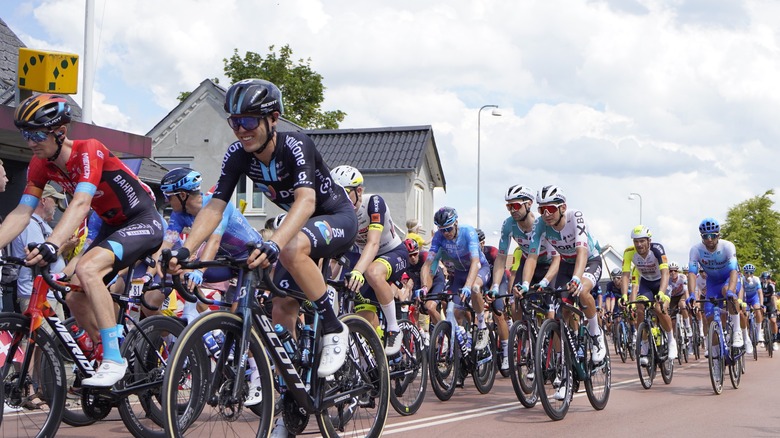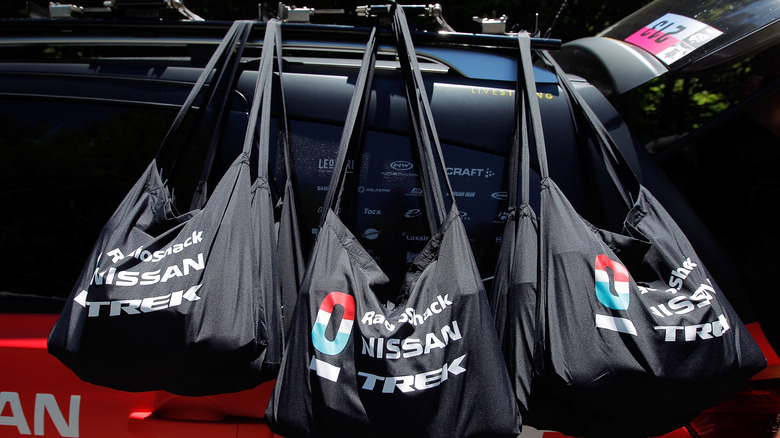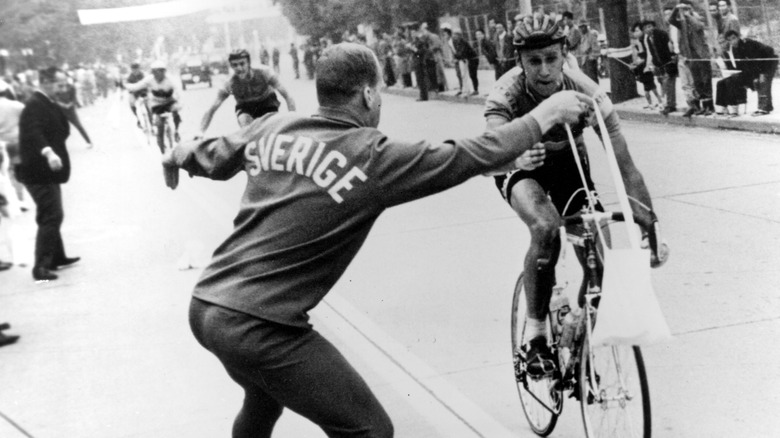Cyclists Eat On The Go When Competing In The Tour De France
The Tour de France is a brutal and dramatic cycling race across some of the most beautiful countryside in the world, though competitors are hardly focused on the scenery. The race combines flat, winding stages, and grueling mountain climbs that can devour weaker riders. Vox illustrates how intensely difficult Le Tour can be, but the race truly is the pinnacle of cycling.
As all athletes, from amateur to professional, understand, balancing nutrition and calorie intake are critical components to success in competition. This is especially true in cycling. According to Cycling Weekly, riders in the Tour de France need to consume between 4,000 to 9,000 calories a day to maintain the energy demands of the race. These insane caloric intakes are achieved, in part, through carefully planned pre- and post-race meals. However, when riders inevitably need to refuel in the middle of a race, doing so presents a dangerous logistical nightmare — and where the musettes come into play.
WWI meets modern cycling
Though the Tour de France has been run fairly consistently since 1903, WWI halted any cycling between 1914 and 1918. According to Atlas Obscura, during the war, French soldiers were provided with provision satchels called musettes. These were small packs where soldiers could keep spare rations, personal items, or any other important things they needed. Musettes were a lightweight alternative to a backpack, an example of which can be seen on display at the National Air and Space Museum.
The wartime musette provided the Tour de France a solution to a problem it had been having before the war began: feeding riders in motion, says Atlas Obscura. Cycling Weekly explains that food handed out during the race must be portable and very easy to eat. So, the solution was to provide cyclists with a small, long-handled bag of goodies at strategic checkpoints during the race. The bags, still called musettes as they strongly resemble the size and shape of the WWI packs, are filled with the hydration and fuel needed for the rider to complete the stage with optimal energy and nutrition.
Musette contents and timing importance
If you thought the riders popped their kickstands and leisurely grabbed these packs, think again. Members of the cyclist's team deftly hand the small but heavy bag to them among a peloton of hundreds, all of whom cannot (and will not) stop their bicycles. It's a task that requires speed and perfect timing. According to Atlas Obscura, team assistants, or soigneurs, will station themselves at designated feed zones and hold the musettes out at the perfect height for the passing cyclist to catch. The handoff is a carefully orchestrated task, but one that could end in catastrophe if executed incorrectly. Any swerve from a cyclist to avoid a dropped satchel would result in a domino effect of crashes. Still, as no one else seems to have figured out a better way to provide moving cyclists with food, the musette remains.
The contents of a musette are designed to provide the rider with fuel and hydration. According to Cyclist Weekly, a typical musette will contain a bottle of water, a sports drink with electrolytes, energy bars, isotonic gels laced with caffeine, rice or fruitcakes, and a can of Coke. The soda might seem like an odd addition, but it's high in calories and provides a nice boost in morale for a tired rider.


